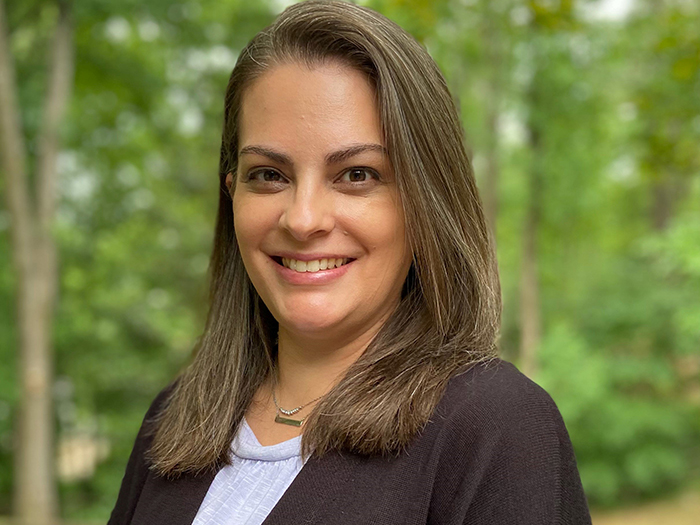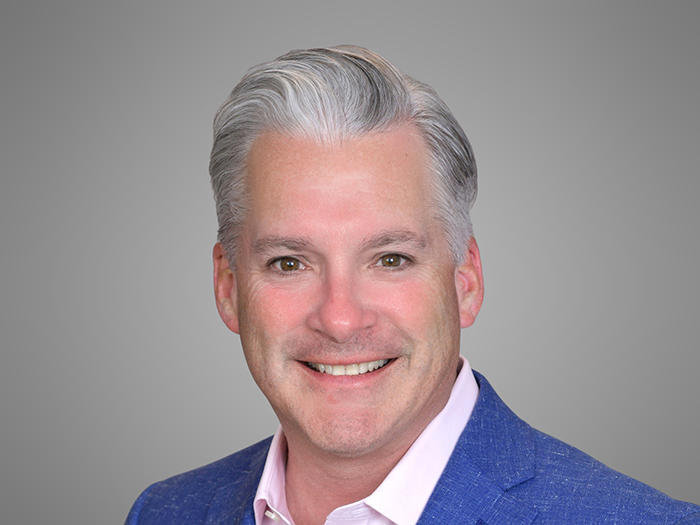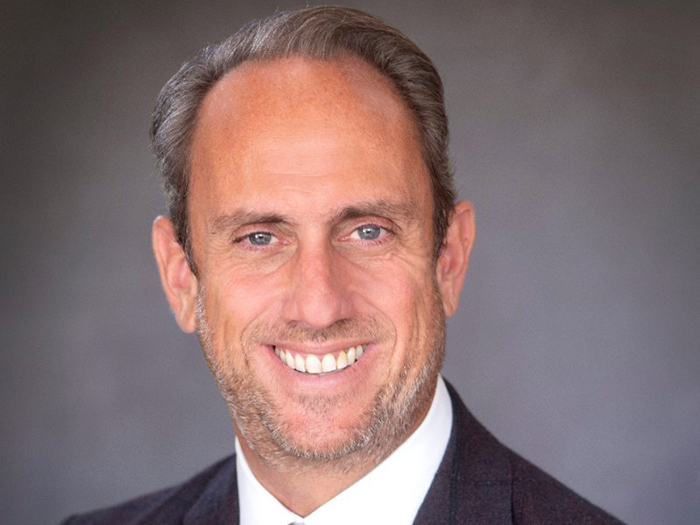Allied World’s Joyce Duarte Talks to Risk & Insurance About Her Sparkling Commercial Insurance Voyage

It might be said that Allied World’s Joyce Duarte was born and raised in insurance — or very near it, anyway. She’s from Bermuda and went to college in Hartford, Conn., each of which are epicenters of commercial insurance activity.
With a background in professional liability underwriting, she now holds a senior vice president and regional executive position based in Atlanta.
Risk & Insurance® editor-in-chief Dan Reynolds recently spoke to Duarte about her years of insurance experience and her approach to team leadership. What follows is a transcript of that discussion, edited for clarity and length.
Risk & Insurance: Talk to us about your origins in the insurance business, Joyce.
Joyce Duarte: I was born and raised in Bermuda and until recently, lived there my entire life outside of college.
I planned to become an elementary school teacher, but during the summer of my senior year of high school, I was encouraged to switch to business school and consider a career in insurance. The more that I learned about the insurance-driven Bermuda economy, I realized that there was a lot of opportunity for me in the field.
One summer, I interned at a small finance investment firm and realized that I had an interest in finance, so I decided to pursue an insurance degree with a finance major, just in case the insurance thing didn’t work out.
More than 20 years later, I’m still in the insurance field and have no regrets.
R&I: And you’ve been with Allied World for a while now, correct?
JD: Yes, I’ve been with Allied World since 2002. When I joined it was a brand new company in a hard market environment. Going into it, I thought, well, either it’s going to be a wild success or it’s going to be an absolute failure. Clearly it has been a success, as we are celebrating our 20th anniversary this year.
It was exciting to be a part of the ground-up team, starting out the professional lines division and then moving into various leadership roles, including professional lines branch manager for the Bermuda team.
In 2014, I moved to Atlanta and took on a national role underwriting insurance company professional liability. In 2016, I was named one of the first four professional lines zonal managers, responsible for professional lines products and teams in both the southeast and mid-Atlantic regions.
In 2018, I was promoted to SVP, southeast regional executive, which is my current role, responsible for leading all products, including property, casualty and professional lines in seven states and leading a team of more than 30 in the southeast region.
R&I: It’s interesting that you’ve got the professional liability background and now you’re in a role where you’ve got broader oversight. What’s it been like to transition from that focus on professional liability to a multiplicity of lines?
JD: It was certainly a challenge, but I would say that insurance is insurance, so other lines were not that significantly dissimilar to professional lines.
Also, I have benefited from the strong team that we have in place. I’ve been able to lean on them, their expertise and talent to help me broaden my own experiences and grow my network in those areas.
R&I: What is it about leading people that energizes you?
JD: Leading people is at the core of what I do, and it really allows me to thrive. I love connecting with people, and I believe that everyone has a story to share.
Communication is crucial to leadership, and it is the key to being a successful leader. I often say that communication will never be perfect, and it can always be improved, and I focus on improving communication daily within our team and with our broker partners and clients.
Communication isn’t only about how you deliver a spoken or written message; it is also about listening.
A good leader needs to listen first to truly understand what their team needs. Only then can I successfully communicate a plan, a vision, a goal, a strategic pathway. This is critical to leadership.
I take time to meet individually with our team, listen to what’s going on in their world, where they want to be and what makes them happy.
R&I: Has it been a good experience for you so far in terms of trusting in your judgment, delegating a task to someone and seeing good results?
JD: Absolutely. Having a team of more than 30 people, you run the full gamut of not only personality traits but also skillsets. Building trust is critical. I think you need to be able to give them enough space to make the mistakes that they need to learn from without jeopardizing the operation.
Giving individuals an opportunity to work on projects outside of their area of expertise allows them a chance to truly shine. For example, in our southeast region, we formed a local committee made up of people who did not manage a specific team. We asked them to communicate, collaborate and innovate. There was no formal structure and we basically said, “You guys take it from here”.
The idea came from one of our leaders who thought this would be a great idea to develop some of the talent on our team. It was incredible to see the committee come up with ideas and pitch these ideas to the entire team, including the leadership team in our region.
Some of those ideas stuck and were really well-executed, and some ideas fell flat or failed and that was okay. It was a safe space to learn from failure, which is something I struggled with early on in my own career.
Building trust within the team and creating an environment that allowed them to explore new ideas and initiatives, through communication and collaboration, has been great to watch.
R&I: Can you point to a piece of being a leader that you do find the most challenging, that really presents the thorniest problems for you?
JD: The biggest challenge I would say is finding the best communication channel.
When you work with a large team, you have various personality types and communication styles, so I have needed to adapt my own communication style to get the best from the team.
Another challenge is keeping a team motivated and engaged. Some people are motivated by money, some are motivated by praise and feedback, while others are motivated by being in the spotlight and getting that public recognition.
I think it comes down to getting to know the people on your team so you understand what makes them tick and then showing up to meet that need.
R&I: How does the culture at Allied World work for you? You sound like you’re very good at supporting the people who report to you, but how do you get support from the other executives in the group?
JD: Our executive team is very supportive, and I would say that their support begins with an open line of communication.
We don’t have multiple levels of decision makers, and there is a lot of authority in the field, so if there’s a challenge that we need to address, I not only have direct line into my boss but also to the CEO of our company. That support from above is critical, and it’s really just a phone call away.
R&I: Does that build your confidence, give you a better foundation to do what you’re doing?
JD: I would say yes. I know that I have the support of the executive team as has been demonstrated many times. Our CEO likes to use the term “Allied World Family,” and it really does feel familial here. If you have a challenge or an issue, as you would in your own family, you huddle together and you figure it out together.
That support structure helps to provide the confidence that you need to make a sound decision, stick to it and push forward.
R&I: Going back to that, getting the professional lines off the ground, getting promoted into overseeing five, six, seven lines of business. Given that you have the PL background, what lines have been really eye-opening for you in terms of opportunity?
JD: The first one that comes to mind is cyber insurance. We have been committed to that product line for more than 10 years now and have been a consistent player in that market. We’ve done a great job, I think, building out that book in a profitable way, and as new opportunities present themselves, we will try to take advantage of those as best we can.
Another area of opportunity is employment practices liability. During my time in Bermuda, I played a key role in creating and launching our primary EPL and primary wage and hour products — that was very exciting. Given what is going on in the world today, there will be opportunities we can leverage in the employment practices arena.
I see environmental liability as another growth area for us. Our environmental team has done a great job communicating the value of their product and there is an opportunity to leverage relationships with clients on other product lines to demonstrate the value of our environmental liability products.
R&I: Is there another risk out there that’s really giving insureds fits right now, or maybe difficult for underwriters as well?
JD: Perhaps not coverage-specific, but more generally, rate and the sustainability of that rate in our market is crucial now more than ever.
In the last year or so, we’ve had significant rate increases across the board and that follows almost 10 years of softer market conditions. So, the sustainability of rate increases is absolutely vital to the success of our industry.
We make every concerted effort to work with our broker partners and our clients to achieve the best possible result for both sides of every renewal. We walk them through the history of our relationship, experiences, industry dynamics and explain the rate need. Communication is key to this process and well worth it in preserving our key relationships. &










